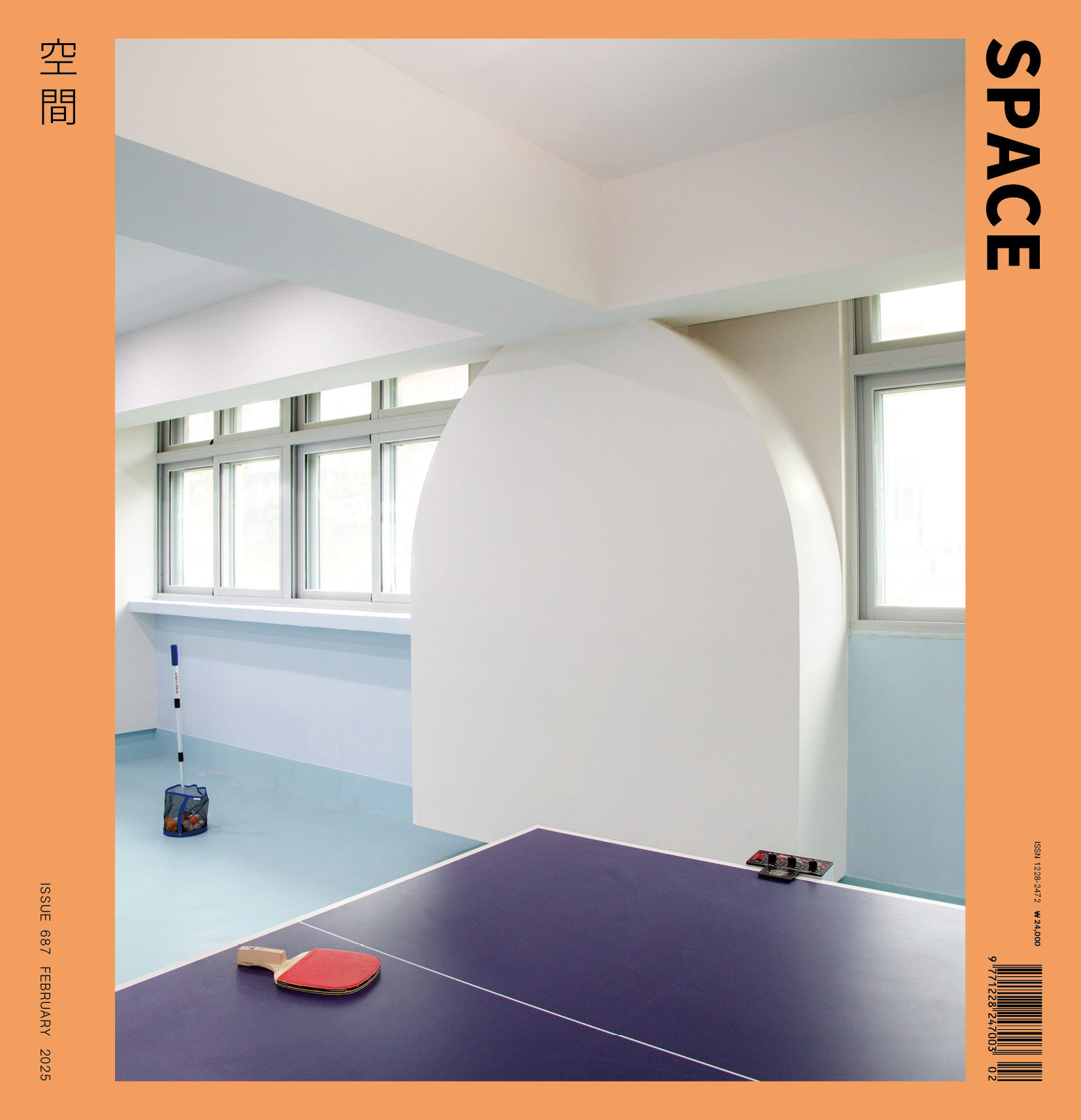SPACE February 2025 (No. 687)
Jeju’s Position from Now▼1: 50 Years of the Architect Kim Seokyoun
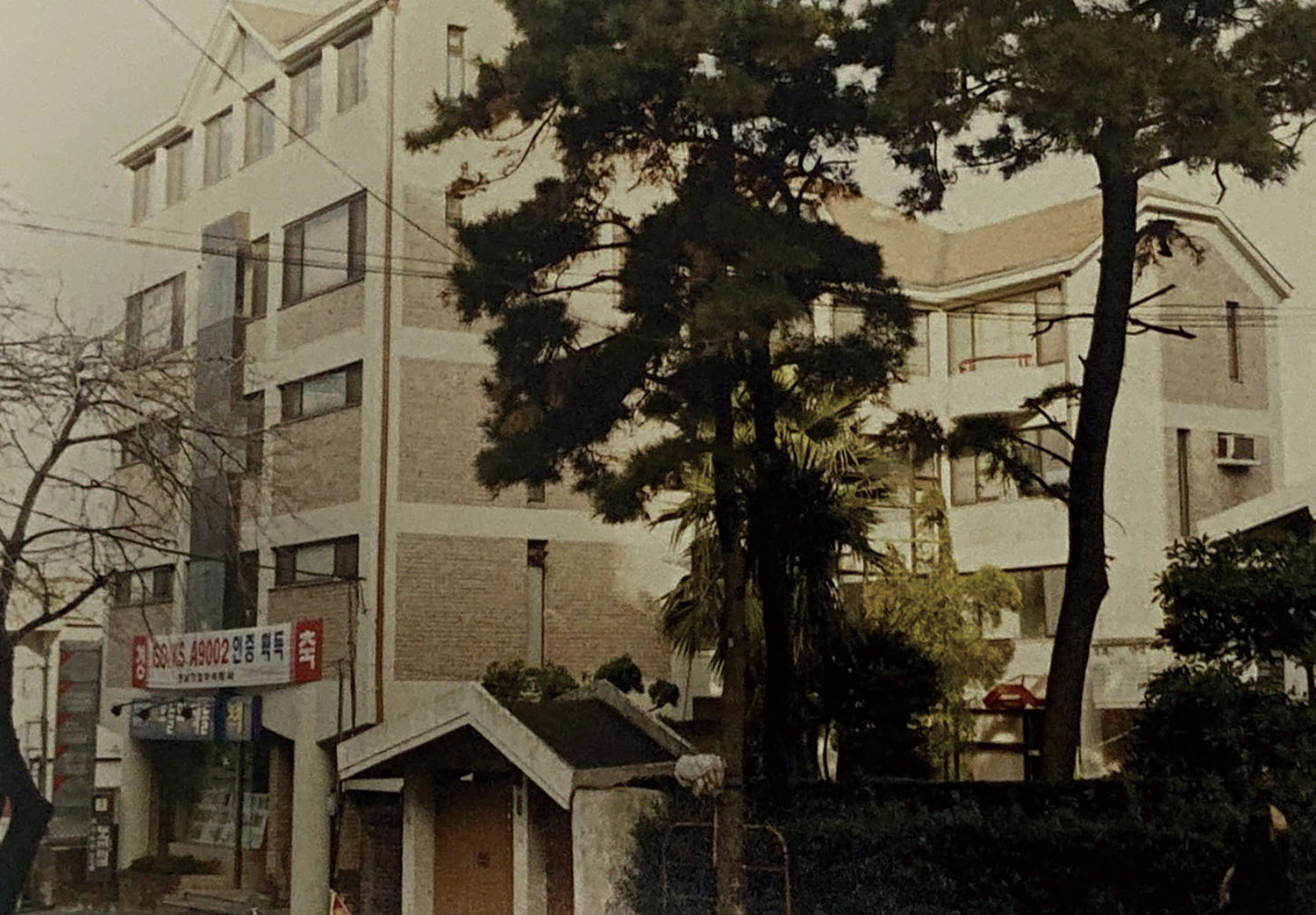
Architect Kim’s Atelier Building (1992) Image courtesy of Mokchon Architecture Archive / ©Kim Seokyoun
interview Kim Seokyoun principal, Architect Kim’s Atelier, Woo Don-Son professor, Korea National University of Arts × Kim Jeoungeun editor-in-chief
On the 29th of November, the Mokchon Foundation in Naeja-dong, Seoul hosted an event to commemorate the publication of Oral history of Architect, Kim Seokyoun which covers 50 years of his architectural work in Jeju. Kim, who said that ‘Jeju’s vernacular architecture taught me how to do architecture’ and strove to define Jeju’s regional characteristics, is the first architect in the series to be based outside of Seoul. As a ‘grown up’ who has been active not only in Jeju’s architectural life but also in its cultural scene, the celebratory atmosphere created by his colleagues, juniors, and known civic organisation members from Jeju and Seoul was abundantly present at the second book launch event held in Jeju Munhwa Forum’s seminar room. SPACE caught up with him to learn more about his search for ‘Jeju-ness’.
Kim Jeoungeun: I enjoyed reading Oral history of Architect, Kim Seokyoun (MATI BOOKS, 2024) which was published last November. I think it was because one could say that Kim Seokyoun’s life history represents the entire history of Jeju architecture. In recent years, SPACE has published many articles on Jeju architecture. Most of them are articles charting new housing accommodation, cafés, and private houses designed by architects based in Seoul. Architects working in Jeju today tend to emphasise Jeju’s regional conditions such as materials, position, and climate, and it seemed to me that the answer to where all these interests had originated from could be found in this book.
Woo Don-Son: Jeju is popular among Koreans, and yet the notion of its widespread popularity are largely based on the perspectives of people living in Seoul. The term ‘Jeju’ literally means ‘province across the water’. From its point of origin, how people in Seoul viewed Jeju mattered greatly. Is it fair that everything about Jeju, including its regional characteristics, is subject to a one-sided evaluation from those in Seoul and the mainland? My answer is no. So, how might Jeju come to develop its own attitude towards itself? For this task, Kim Seokyoun became Jeju’s voice. We wanted to shed light on how Jeju’s identity became expressed architecturally throughout Kim’s career. As such, we invited Kim to be the 11th architect in the oral history series by Mokchon Architecture Archive.
Kim Jeoungeun: When you agreed to be a part of this oral history series, what were your thoughts?
Kim Seokyoun: At first, I was quite hesitant. I felt uneasy about being included in this oral history collection project by Mokchon Architecture Archive alongside such illustrious architects who have played such pivotal roles in the Korean architectural scene, particularly as I never placed much importance or meaning on leaving my mark. This was influenced by my father (Cheongtan Kim Gwangchu, 1905 – 1983), who – as I mention in the book – despite being active in art and financially supportive of fellow artists, avoided doing personal exhibitions because he had no desire for fame. An art museum once offered to exhibit his works before he passed, but he also rejected that invitation. As time went on, this constantly bugged me as something regrettable. Then, one day, Kim Yongmi (co-principal, G.S Architects & Associates), who happened to be visiting Jeju as the city architect of some project, persuaded me to take up this opportunity. I gave it some thought and decided that it could be a rather valuable opportunity—not to promote myself but to leave something behind for historians who study Jeju’s architecture.
‘The book I am Jeju Architect which was written by practicing architects has just been released. If you browse through the interviews of the ten or so practitioners found in this book, you can see that these architects share a strong self-awareness that “Jeju architecture must be different from mainland architecture.” I think this perspective took root when Kim Seokyoun was lecturing … most of these architects graduated from Jeju National University. As one of the first lecturers of architecture at Jeju, Kim had a great influence on many of his students.’
_Kim Yongmi, Oral history of Architect, Kim Seokyoun, MATI BOOKS, 2024, p. 323.
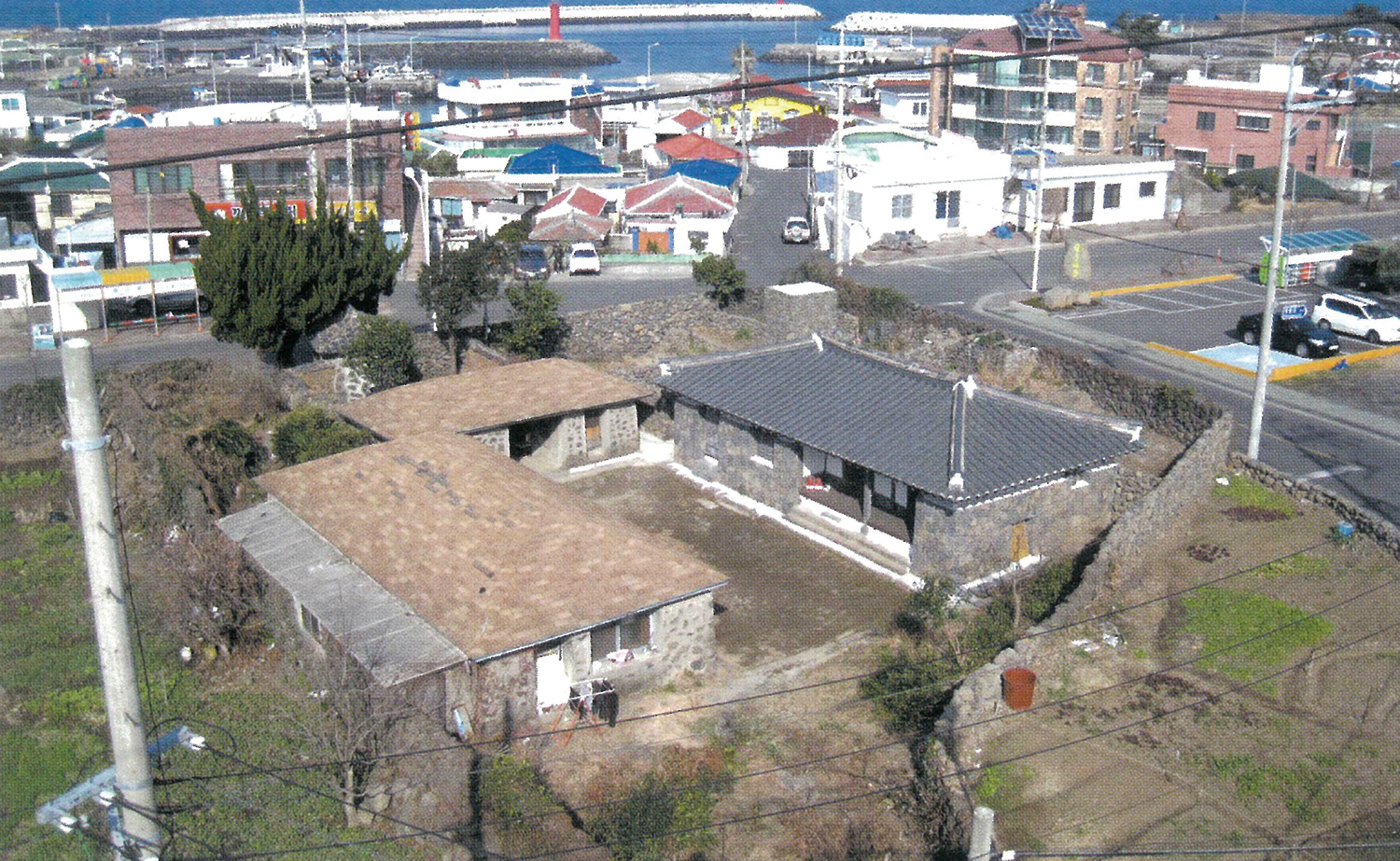
Kim Seokyoun House (1913) Image courtesy of Mokchon Architecture Archive
Kim Jeoungeun: After being persuaded by your uncle Kim Hanseop (1920 – 1990, former principal, G.S Architects & Associates), you left Jeju for the first time to study in the architecture department of Chonnam National University before transferring to Hongik University in Seoul during your sophomore year. You then met Chung Inkook, Kang Myunggu, Aum Dukmun, and Kim Swoo Geun as your teachers, and I find it amusing – as you mention in the oral recording – that Kim Swoo Geun often skipped classes! (laugh) You also said that you thought of Kim Swoo Geun as your role model and decided to work in Jeju. What did you admire about Kim Swoo Geun?
Kim Seokyoun: Everything that Kim Swoo Geun did in Seoul. Renowned figures across culture and the art industry filled the SPACE Theatre of the SPACE Group of Korea Building. What was most lacking in Jeju during that time was a comparably active cultural scene. Being located far away from the city centre, Jeju was relatively slow in terms of catching up to the latest trends. Nevertheless, my father continued to actively practice various art activities such as painting, calligraphy, and horticulture while participating in many related associations to support the next generation. He was a dilettante—he was not ambitious, but he did what he could on his own. I think this led me to admire Kim Swoo Geun especially because he was using architecture to foster such extra-architectural activities. Studying and practicing architecture should lead to a broadening of cultural horizons and enrichment of knowledge so that one may hold conservations with just anyone about anything.
Kim Jeoungeun: So that is why you chose to reside at the top floor of your self-designed atelier while using the basement as cultural space. What recent events were held there?
Kim Seokyoun: The basement space is now used by Jeju Munhwa Forum which engages in social cultural movements. Various exhibitions and events are held for the locals. As an example, I once gave a lecture on the city and its architecture, and professionals such as professors Jeong Seok and Song Inho, Youn Hyukkyeong who worked in the Seoul Metropolitan Government, and Choi Junghan from the Space Cultural Center came by. I also delivered a lecture for the local citizens in order to foster public interest in urban space improvement initiatives. The civic organisation in Jeju is very enthusiastic.
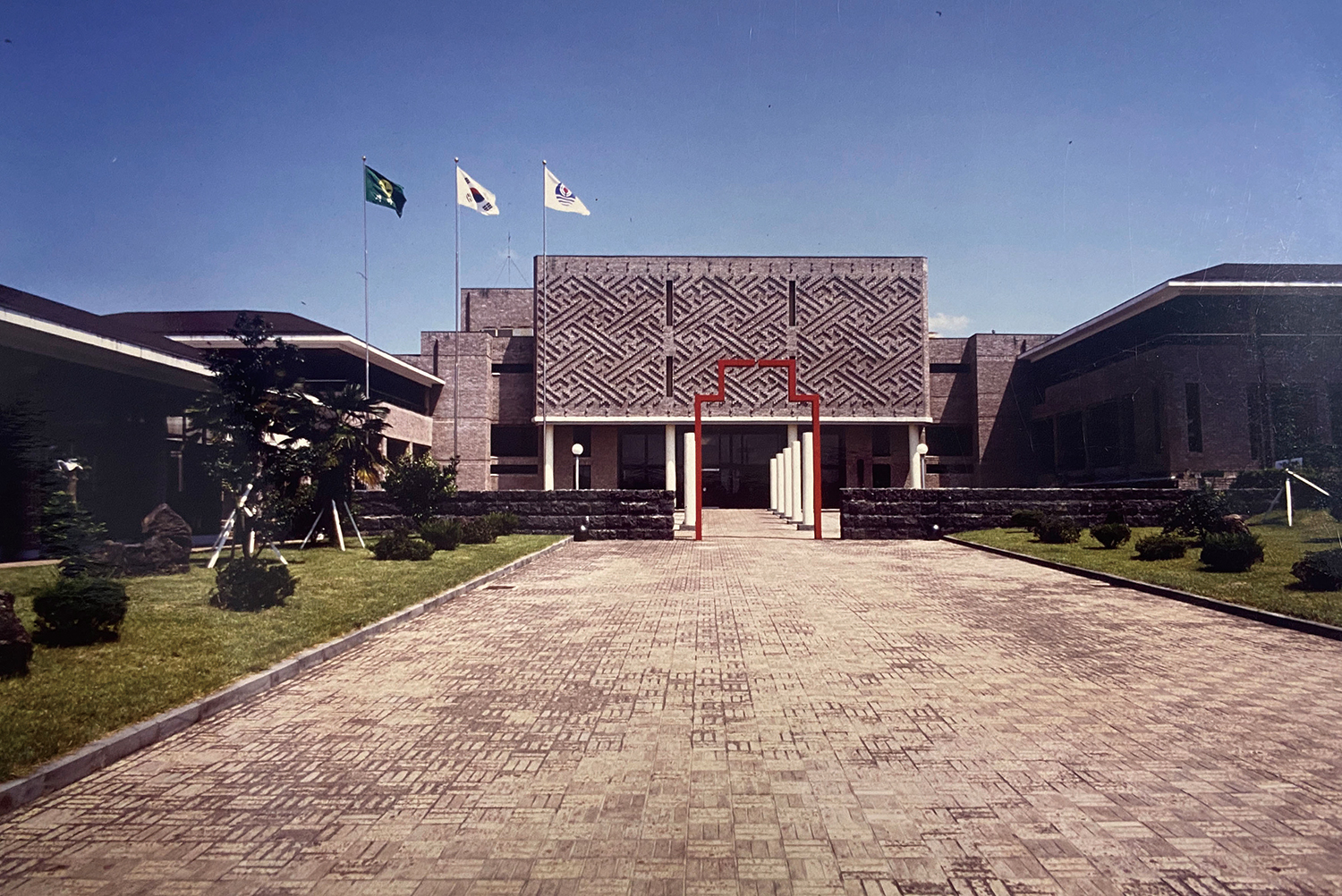
Jeju Tamra Library (1989) Image courtesy of Mokchon Architecture Archive / ©Kim Seokyoun
Kim Jeoungeun: After working in education and G.S Architects & Associates during your time in Seoul, you returned to Jeju in 1972. What led to this decision instead of settling down in Seoul? What role did you see yourself playing in Jeju?
Kim Seokyoun: The decision was not based on some profound aim. After getting married, the income from the architect office was simply not enough to support my family. So, after working for about two years at a construction company (Segi Construction) in Jeju, I became a licensed architect and established Architect Kim’s Atelier in 1974.
Kim Jeoungeun: The 1970s and 1980s was a time when the central government’s interest towards Jeju was rising, what with the completion of the Bomun Lake Resort at Gyeongju. You also won the Korean Institute of Registered Architects Award in 1975 for your work on the Yongduam Rest Area.
Kim Seokyoun: This became a hot topic in Jeju. People started realising that architecture is also a kind of art and not just something for real estate designers.
Kim Jeoungeun: After reading Oral history of Architect, Kim Seokyoun, I now really want to visit your birthplace. (laugh) Through your studies on traditional folk houses, including Kim Seokyoun House (1913), you defined Jeju’s architectural prototype as an ‘angeori and bakgeori house’ in your master’s thesis A Study on Architectural Identities of Vernacular House in Cheju-do Island (1986) and your doctoral thesis Transformation & Architectural Characteristics of the Traditional Housing in Cheju-Island in the 19th century (1997). In the 1980s, you did many housing designs such as Hyun’s House (1980), Go’s House (1982), Kim Hanjoo’s House (1983), Kim Seungtaek’s House (1984), and Jeju Governor’s Official Residence (1985). It seems that you integrated your understanding of Jeju’s windy climate and territorial properties with your studies on Jeju’s traditional houses in these projects.
Kim Seokyoun: I think much of the spatial experience to which I was exposed to during my childhood has become a significant part of my architectural view. Of course, it is only after many years that I learned about the housing landscape and key principles of composition. Kim Seokyoun House has been designated as a local cultural asset. It was Kim Hongsik (emeritus professor, Myongji University) who played a significant part in influencing me to go into folk studies, but since I was a designer, my interests leaned more toward unique spatial organisation methods than architectural form.
Kim Jeoungeun: From the late 1980s to the 1990s, you start to perform public architecture. Jeju Tamra Library (1989), Jeju Welfare Center for the Elderly (1991), and Jeju Local Official Training Center (1993) are some of its representative examples. You applied angeori (inner house) and bakgeori (outer house) concept of traditional folk houses as well as madang and olle to the Jeju Tamra Library. Many young architects today begin with a study of this angeori and bakgeori concept when designing in Jeju. While it is interesting that you are the one who first developed and applied this composition principle of Jeju folk houses in practice, I hope that the new generations of architects will now use the foundation that you have laid to take the next steps in various ways. Your studies on Jeju’s local materials are also significant. Am I right in thinking that you used basalt for the Jeju Governor’s Official Residence? It was interesting to hear that basalt, which was once a symbol of poverty in Jeju, started to be used in Jeju again after it became trendy in Seoul. When one speaks of Jeju architecture, one immediately thinks of basalt.
Kim Seokyoun: I am not an adventurous person, and so I tend to avoid experimentation! (laugh) The architects who eagerly integrated Jeju rocks into architecture were from Seoul. While Seung H-Sang is well-known for his unique basalt detail, basalt was already being used long before him. In the early 1980s – probably a work by Ahn Byung-ye – basalt was used for the landscaping of NIKKEN SEKKEI’s Jeju Grand Hotel (currently Maison Glad Jeju) for which Ahn was the site’s local architect. Basalt was originally brought to light in the Folklore & Nature Museum Jeju Special Self-Governing Province (1984) designed by Kim Hongsik. I was particularly impressed by the description of this museum’s roof (where basalt was used) in the book On the Road: Tamra Travels (1986) by the Japanese author Shiba RyŌtarŌ (1923 – 1996). My thoughts on Jeju basalt also began to shift towards the positive side as more architects started using it as building material.
Kim Jeoungeun: When Seoul School of Architecture (sa) organised a workshop at Jeju in summer 1998, you interacted with Seoul-based architects during the event. You recounted how professor Jeon Bonghee told you that he personally found your works in the 1990s, before the sa event, more impressive.
Kim Seokyoun: Professor Kim Bongryol told me that I should be more faithful to modernism.
I was stuck on what I should do about the roof – a basic part of our Jeju culture – and I ended up taking his advice and finished Jeju Museum of Contemporary Art (2006) as a roofless box.
Woo Don-Son: The message was one of regret about a path not taken. Maybe Jeon wished that Kim had taken a more independent path rather than sticking with modernist architecture like Louis Barragan. (laugh)
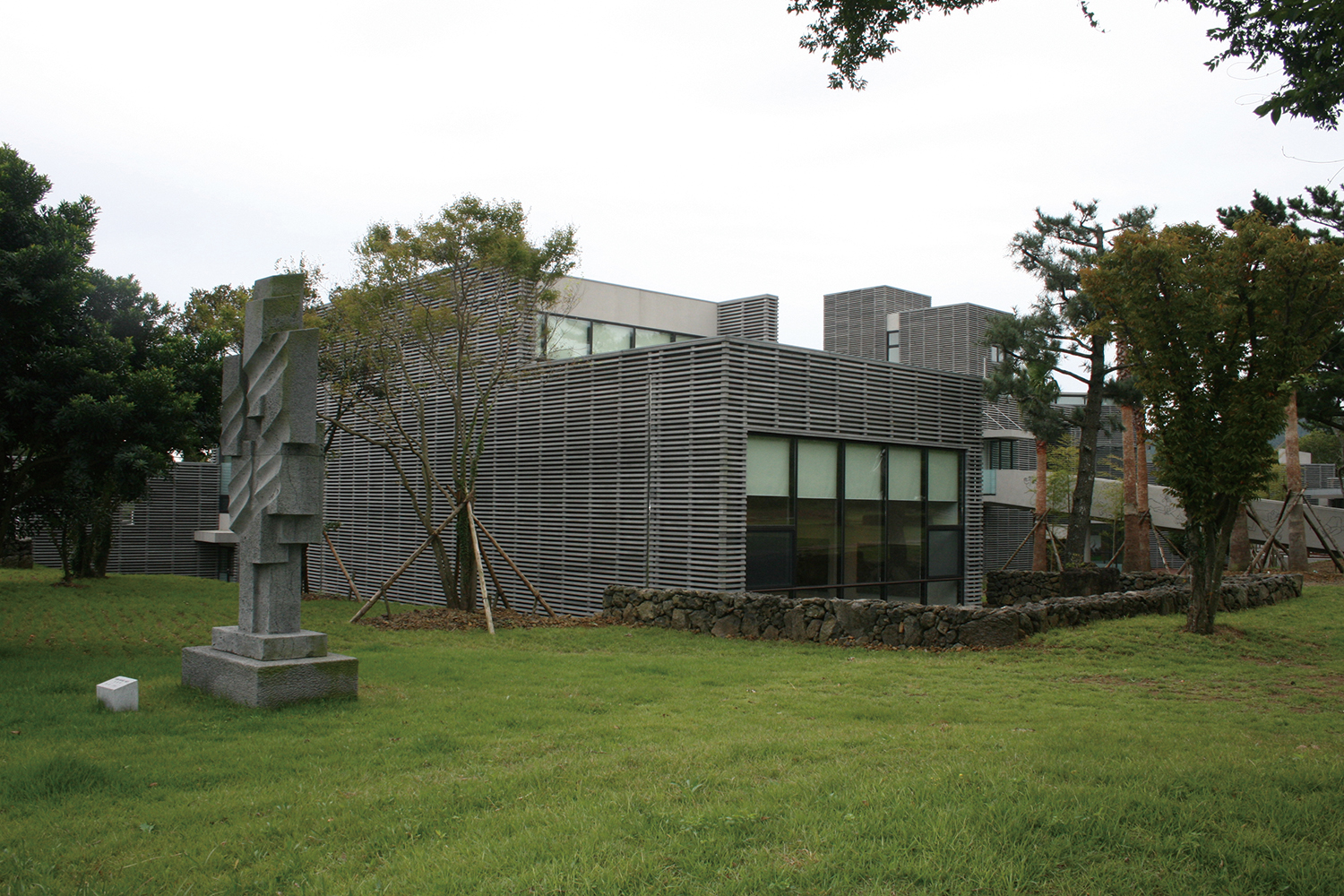
Jeju Museum of Contemporary Art (2007) Image courtesy of Mokchon Architecture Archive / ©Kim Seokyoun
Kim Jeoungeun: Many active young architects in Jeju today are your students from Jeju National University. Do you have anything to say to them?
Kim Seokyoun: I feel sorry for the younger generation because they live in a much harder time than we did. I wish you strength to overcome this difficult period.
1. The title is inspired by Yu Gyeyoung’s poem collection, My Position From Now (ACHIMDAL BOOKS, 2021).
